In Part I, we introduced you to a man who has founded, grown, and sold off two innovative software companies (and remains CTO within a firm he helped create to improve connectivity across mobile platforms) and for the past 8 years has worked with a partner to build the world’s first full Cloud-based small business accounting program!!! That man’s name is Rod Drury, who serves as CEO of the New Zealand-based SaaS[1] company, XERO Limited (XRO)[2].
In my opinion, these are the essential keys to Drury’s success at XRO:
1) Drury is living his passion.
a. From his high school days in a computer classroom at Napier Boy’s High School[3], Drury developed an undying passion for the unlimited potential of the IT world.
b. Drury has said: “The magic of computing is like an assault on your brain. With computing you’re always solving a problem. Doing a project built more confidence and things got bigger and bigger!”
2) Drury was willing to take risks in order to live his passion!
a. Drury enjoyed a brief apprenticeship at Ernst & Young – helping with the development of more efficient business systems. However, when his service as an apprentice was completed and Drury was certain that his calling was in software development – he discovered that there were no such jobs available then.
b. This step is crucial… he made the following commitment: “there were no software development companies to work for – so we just had to start our own! We created the jobs we wanted.”[4]
3) Drury became very successful as he fulfilled his passion.
a. Between then and 2005, Drury created, grew, and sold Glazier Systems and AfterMail, becoming a millionaire in the process.
b. By the year 2006, those successful ventures had provided Drury with the experience, connections, and maturity he needed to tackle what he (and Hamish Edwards) saw as an important and emerging need – a Cloud-based software program for small business that would provide business owners/leaders with real-time on-line accounting, invoicing, billing, and banking interactions.
c. Within a year, Drury listed the company on the New Zealand Exchange (a rare move in those days);
4) Drury’s earlier success brought him confidence and maturity. He no longer looked at his software (company) development work from just a short to intermediate term perspective – instead, he was willing to be patient and focused over a much longer period!
a. As he kept focused upon developing the XRO software, as well as telling the story of XRO, Drury won over the commitment (and pocketbook) of MYOB founder, Craig Winkler, whose major capital infusion empowered Drury to focus upon the development of a long-term plan.
b. Then, as XRO grew and investors bid up its price, Drury was often asked: “When are you going to sell?”
c. In reply, Drury has said on a number of occasions: “I could sell Xero but that’s not the goal any more. In the early parts of your career you want to earn some money. Now that I’ve built something that is really interesting, that is good for people, the thrill is in building a global team. There are [hundreds of] people all over the world now working for the company.”
d. Building on that theme, Drury has often said: “We wanted to be a global business from day one.”
e. None of this would have unfolded as it has if XRO had been Drury’s very first venture in business! He needed experience and maturity to bring him to a wholly different level of commitment – the long-term commitment he has made to XRO![5]
Now in his eighth year of building XRO, Drury has just embarked (in 2012 and 2013) on what may be the most exciting, energizing years at XRO – as demonstrated by:
1) It took the company five years to build a customer base of 50,000; it only took ten additional months to double that customer base!
2) The company’s invested capital skyrocketed by 400% in less than two years!
3) The company’s stock expanded from a single exchange listing (in 2007) to “dual listing” (by 2012… when it listed on the Australian Exchange).
4) It opened its first U.S. location last fall in San Francisco, CA.!
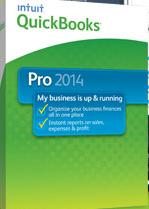 Combine Drury’s past achievements with his passion and laser-vision focus, then add the new bursts of energy generated by developments such as those above, and you have a CEO who is “on fire”: “We don’t have any doubt we’re going to be successful. You make sure you’re managing strategic risk, hire great people around you and control systems – it’s not rocket science.”
Combine Drury’s past achievements with his passion and laser-vision focus, then add the new bursts of energy generated by developments such as those above, and you have a CEO who is “on fire”: “We don’t have any doubt we’re going to be successful. You make sure you’re managing strategic risk, hire great people around you and control systems – it’s not rocket science.”
Now that we have this background on why Rod Drury is an especially impressive entrepreneur and CEO, let’s take a look at how this industry came to be what it is today. As we wrote in our article on INTU, that company really drove the market for small business accounting software from the very start – back in the mid 1980’s. INTU’s desktop software (Quickbooks — purchased back then in the familiar boxes found at Best Buy, Office Max, etc.) was so successful that it drove most of its early competitors out of the business. In those early days, Quickbooks was disruptive because it transformed the way in which small business accounting could be handled. It is hard for us to remember the days when tax preparation and accounting work were carried out by hand – with far too much tedious work, repetition, and chance of error.[6]
Obviously, computerized accounting and tax preparation had been available for quite a number of years prior to Quickbooks — but only if you had access to a large computer server. Quickbooks made the vastly improved processing and efficiency of the computer available to both the accountant and the small business owner at their desktop – allowing for the development of time-saving, streamlined processes to get essential financial data to the accountant and receive understandable statements and reports from the accountant in record time!
The folks at INTU developed a strong network of CPAs with whom it partnered to do the following:
1) Train the CPAs in the ins and outs of the software;
2) Seek feedback from the CPAs regarding how to improve the software;
3) Offer certification to CPAs who completed a Quickbooks-centered program:
a. The purpose of certification was to ensure optimal use of the software and
b. Provide the CPA with an additional credential to use in marketing to clients interested in efficient accounting.
As you read in the earlier article, Quickbooks became fabulously successful. The strategic partnership with CPA’s was a perfect sales/marketing plan for at least these reasons:
1) As INTU trained the CPAs, INTU developed confidence that the product’s features would be maximized;
2) Each partner CPA became a sales agent, encouraging small business clients to purchase the software;
3) As these CPA practices grew, Quickbooks sales grew!
4) And (a bonus) the CPA’s staff became the first line of “tech support” for small business owners with questions about the software.
 We have an interesting source of information on business software — the firm CAPTERRA[7]. A recent report from them showed that Quickbooks currently boasts the following: 1) Customers: 4.4 million; 2) Users: 5.4 million.
We have an interesting source of information on business software — the firm CAPTERRA[7]. A recent report from them showed that Quickbooks currently boasts the following: 1) Customers: 4.4 million; 2) Users: 5.4 million.
The next largest customer base in “accounting software” has just 3.5 million customers, followed by the third biggest customer base of just 1 million!
The longtime dominance of Quickbooks is self-evident.
 “Hmmmm?” you wonder. “If Quickbooks is so dominant, why are you wasting all this time on an article about a little upstart company from New Zealand with a CEO of whom no one has ever heard?”[8] Adding to your bemusement, as you wrack your brain trying to think of anything good that has come from New Zealand, all that comes to mind is beautiful vistas (like Mt. Cook above) and the movie “Lord of the Rings”[9]
“Hmmmm?” you wonder. “If Quickbooks is so dominant, why are you wasting all this time on an article about a little upstart company from New Zealand with a CEO of whom no one has ever heard?”[8] Adding to your bemusement, as you wrack your brain trying to think of anything good that has come from New Zealand, all that comes to mind is beautiful vistas (like Mt. Cook above) and the movie “Lord of the Rings”[9]
The reason that this era within accounting software is significant is because of the power of “the Cloud” and the continuing growth and evolution of the Software As A Service (SaaS) space. As “mobile” continues to turn the computer industry upside down[10], so “the Cloud” is changing the competitive dynamics within the software industry.
Here is an interesting summary of the competitive landscape within the accounting software space:
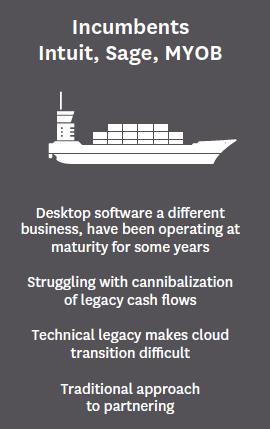 1) Developing desktop software is quite different from designing software that is available through the Cloud (SaaS);
1) Developing desktop software is quite different from designing software that is available through the Cloud (SaaS);
2) The big “desktop” companies recognize they must transition to the Cloud or die… but as they market the SaaS version of the product, the newer product can generate developmental issues and lead to cannibalization of “legacy” cash flows.
3) On the surface, one might think that having a huge existing customer base is an unequivocal advantage. However, a huge legacy customer base means that even as you recognize the need for significant changes in software code, features, processes, etc, … you inevitably have hundreds of thousands of customers insisting[11] that you not change anything!
4) In addition, there is a psychological dimension at work here. As the dominant player in the space, Quickbooks has the largest financial resources, but it also has to balance its need to report “on target” earnings each quarter (on the one hand) and navigate within an industry that is being transformed each and every week (on the other). Simply put, Quickbooks has the most to lose, and that can exert a negative impact on INTU management.[12]
5) A few years ago, as its customer growth slowed and INTU needed a boost in sales, you may recall hearing a flood of new commercials and ads that touted: “You don’t need to be an accountant to handle your books, or a tax professional to prepare your taxes… just buy Quickbooks and Turbo Tax!” Can you figure out what the problem with that campaign was? Think back to which groups INTU first used as strategic partners in building Quickbooks. It partnered with CPAs! Many thousands of those CPAs felt betrayed, belittled, and disregarded by that ad campaign, and they may never trust INTU again.
As we have learned through the evolution of smartphones, the role and importance of “Application Creators/Providers” cannot be overestimated.[13] We live in an “App Hungry” world, and creative entrepreneurs are regularly developing the “next new must have” app. In the business software world, these apps specialize in one or more functions that make the life of a small business more efficient and (ultimately) – allows the entrepreneur to devote more time to profit generation (or recreation). Here is a useful description of that part of the industry:
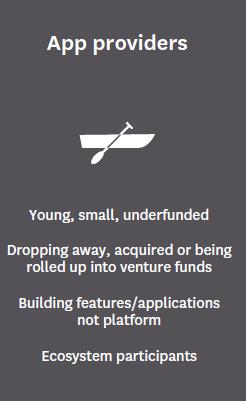 1) By definition and scale, these providers are extremely innovative and entrepreneurial, operating on a small scale with minimal funding;
1) By definition and scale, these providers are extremely innovative and entrepreneurial, operating on a small scale with minimal funding;
2) These providers are extremely focused on a small portion of the accounting process – developing an app that provides new or improved functioning within that process. Therefore they do not need to concern themselves with code for an entire platform – they need only develop code for a subset of steps within the larger accounting process;
3) They do need to partner with the vendor of an accounting ecosystem… OR depend upon the availability of a free and flexible Application Programming Interface (API) within an existing accounting system. [The API enables app code to be integrated within the software system code of an accounting product].
4) These app providers are (generally) in the business to develop the app, promote it until it gains “scale”, and then sell the app to (or be rolled up into) a company or venture cap fund.
Into this increasingly competitive landscape came Drury’s envisioned product: accounting software that is strictly and entirely based “in the Cloud”. Obviously, he ventured along at the right time, as SaaS was developing and gathering momentum. Within the world of accounting software, he operated with the distinct advantage of being the first developer to design and build an entire accounting ecosystem for small business within the Cloud. From the first code created and uploaded until this day… that code was specifically designed for the Cloud. There is no “desktop” product… no packaging… no retail, etc.
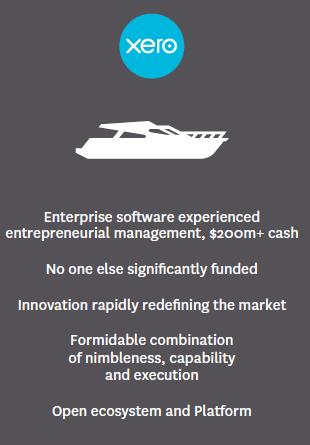 It is obvious that XERO created the following slide, so it definitely has a “slant”. However, based on all the research I have done, I believe it is a fair representation of reality:
It is obvious that XERO created the following slide, so it definitely has a “slant”. However, based on all the research I have done, I believe it is a fair representation of reality:
1) XRO offers a comprehensive accounting program rather than just primary components;
2) It is well-funded;
3) There is no significant, comparable Cloud-based competitor;
4) It warns that rapid innovation is redefining the market… a distinct advantage for it now… and something with which it must keep up and adapt to along the way;
5) Being small offers it the advantage of much greater flexibility than Quickbooks (as well as other legacy systems).
6) XRO certainly doesn’t have to wrestle with hundreds of thousands of clients who “do not want anything changed.”[14]
7) XRO provides CPAs, small business users, and app providers alike with an exceptionally “open” Platform and ecosystem… including a free API and the tools to, in a surprisingly short time frame, import one’s accounting data from any other system into XERO.
That final point is worth highlighting. The extraordinary flexibility of the XRO accounting package contrasts with the less flexible, more tightly controlled system offered by INTU. I hasten to observe that this contrast does not necessarily make one product better than the other! In fact, this difference in systemic flexibility could be likened to the contrast between the Apple (AAPL) iOS system vis-à-vis the Google (GOOG) Android system.
As we know, AAPL keeps a very tight rein on its system. It wants to ensure the quality and integrity of its system and feels that the best way to do that is to be the only one to manufacture iOS products. In contrast, GOOG chose to make Android an “open” system. The result has been a multiplicity of manufacturers designing, creating, and marketing Android phones (at my last count, the number of producers was well into the teens!) The not surprising result includes these facts: 1) Android market share has been climbing steadily, as iOS share has declined; 2) Apps for Androids are far more plentiful than for iOS.[15]
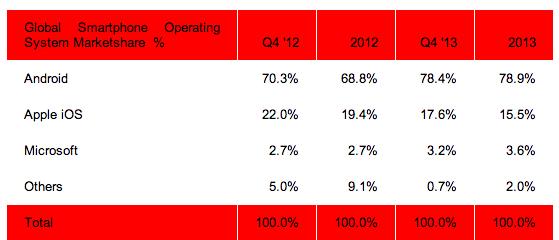 Both operate at a very high level. Some customers swear by the iOS system and do not intend to change in the future. Others have found that the Android system is to their liking and do not intend to switch to iOS.
Both operate at a very high level. Some customers swear by the iOS system and do not intend to change in the future. Others have found that the Android system is to their liking and do not intend to switch to iOS.
One major factor marketing factor that AAPL has had working in its favor since the early days of Steve Jobs has been the ecosystem factor, by which I mean that current users of Macbook Pro, Macbook Air, iPad, etc. tend to have a strong natural preference for the iPhone because of familiarity and the fact that it is much easier to “sync” with their other existing iOS products.
Not surprisingly, a parallel dynamic is at work within the SaaS space. Heavy users of the Quickbooks Desktop product or Turbo Tax are more reluctant to leap to XERO because it is new, unfamiliar, involves a learning curve, and, even with the API, would require more adaptability than moving on to Quickbooks Online.
Conversely, those who are not wed to INTU products, who are looking for a solid SaaS accounting program, and who recognize that software coded strictly for Cloud applications is likely to be superior than an online product migrated from (even with extensive modifications) a desktop “legacy” system. The latter demographic is the one most likely to become immediately drawn to XERO.
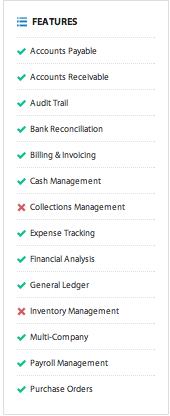 How can we meaningfully compare the XRO Cloud accounting product with its
How can we meaningfully compare the XRO Cloud accounting product with its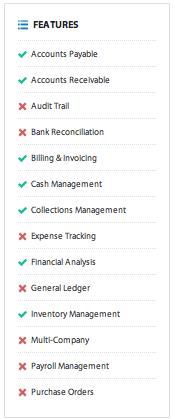 primary competitors?[16] I found an analogy offered by Michael Block, CPA, to be quite helpful.[17] Using the analogy of an automobile as a way to get from Point A to Point B, he has informally categorized various accounting packages currently on the market as falling into the “luxury” slot, the “mid-range” category, the compact slot, or the economy version. It is Block’s opinion that Quickbooks and XERO are the only full feature, “loaded” luxury “autos” within the small business accounting space.
primary competitors?[16] I found an analogy offered by Michael Block, CPA, to be quite helpful.[17] Using the analogy of an automobile as a way to get from Point A to Point B, he has informally categorized various accounting packages currently on the market as falling into the “luxury” slot, the “mid-range” category, the compact slot, or the economy version. It is Block’s opinion that Quickbooks and XERO are the only full feature, “loaded” luxury “autos” within the small business accounting space.
Block’s point is that most of those autos will get you where you need to go – the difference comes in how much extra effort, time or money you need to add in “getting there”. Just imagine the difference between driving from Florida to Maine in a BMW Series 7 or a Tesla Model S versus a Kia Rio, a Chevy Spark, or a Toyota Yaris. You will surely get to Maine, but your journey will quite likely go more smoothly, and your total driving experience much more positive, if you drive the BMW or Tesla[18].
When you review lists of comparable features offered by competing market products, I believe Block’s analogy is both fair and apt.
In fact, let’s try out the following variation on the Rorschach Test.
Which of the feature lists (left and right side of the page above) belongs to Quickbooks and which belongs to XERO?[19]? (The answer is provided at article’s end!)
Almost as important as “features” is the quality, quantity, and variety of applications that can be integrated with the program (as suggested earlier). The XRO platform has well over 275 add-ons created by 3rd party software vendors that integrate with the accounting program.
In addition, a distinct advantage of Cloud-based programs (SaaS) is the ability to support (and always keep updated in accord with market and tax changes) multiple tax rates and currencies. Finally, as implied earlier through my reference to the partnership with ADP, XERO Includes a payroll feature for users who operate in New Zealand, Australia, or US markets.
As I reviewed the competitors of Quickbooks and XERO, none of them can boast of nearly as many features (and add-ons) as either of these “fully loaded” products
What else can we observe in the market?
I was struck[20] by what I discovered online about several XERO competitors on the Internet. For example:
1) “Outright” has been bought out by GoDaddy (known to millions primarily, if not only, because of its Super Bowl ads);
2) “Less Accounting” offers a fascinatingly blunt marketing message on its web home page …. suggesting that you should buy it because it “sucks less”. (See the ad below)

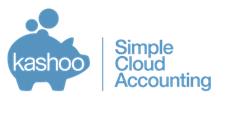 3) “Kashoo” boasts that it offers “simple” Cloud accounting, which is ambiguous enough to suggest to potential customers that it is either very easy to use or can only handle the most basic and simplest accounting needs.
3) “Kashoo” boasts that it offers “simple” Cloud accounting, which is ambiguous enough to suggest to potential customers that it is either very easy to use or can only handle the most basic and simplest accounting needs.
4) “FreeAgent” is very transparent about its market niche (name-wise and customer base-wise) being primarily “freelancers”. Once again, whether that is an appealing marketing message or a caution flag is entirely up to the interpretation of each potential customer.
What other factors might differentiate competitors within this space?[21]
I found subtle nuances within CENTERRA’s brief descriptions of these respective products to be quite glaring. If I didn’t know that CENTERRA was in Virginia, I might otherwise suspect it of being a New Zealand marketing agent!! Read each description below, and pay special attention to the adjectives used!

 I have made due and open confession upon numerous occasions that I am a “Social Media Site” dunce. I barely use them and spend little time with them. However (to my credit) I recognize that I am quite out of step in that respect. So with a nod to all you Social Media users, here is a summary of the “Followers” of each business accounting provider within three popular Sites: Twitter (TWTR), Facebook (FB), and LinkedIn (LNKD).
I have made due and open confession upon numerous occasions that I am a “Social Media Site” dunce. I barely use them and spend little time with them. However (to my credit) I recognize that I am quite out of step in that respect. So with a nod to all you Social Media users, here is a summary of the “Followers” of each business accounting provider within three popular Sites: Twitter (TWTR), Facebook (FB), and LinkedIn (LNKD).
What caught my eye the most was how “hot” (relative to Quickbooks, at least) XERO was on TWTR. Even within the more populist FB site, XERO is holding its own relative to its exponentially larger competitor! One could say (I guess) that XRO is “trending strong” within Social Media!
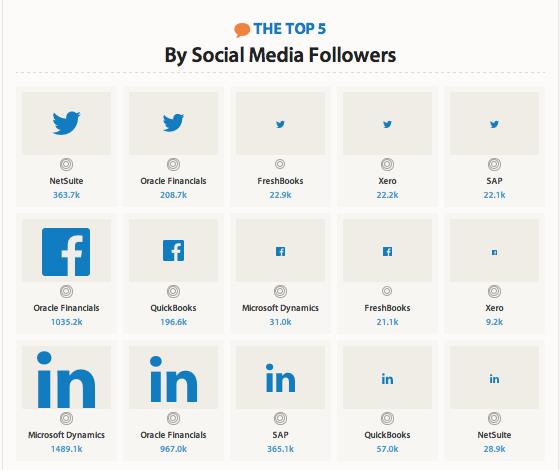 If I were in the market for a small business accounting package, the most convincing “testimony” I have found about XERO came within these paragraphs:
If I were in the market for a small business accounting package, the most convincing “testimony” I have found about XERO came within these paragraphs:
 “All financial data is stored in the Cloud on a single unified ledger, allowing users to work in the same set of books regardless of location or operating system. Fast Company featured the software’s UI (User Interface) design in a 2012 article, stating that the design is simple and makes it easy for users to get an “at-a-glance” idea of real time financial situations.” [See photo to left… XERO released mobile apps for iOS and Android back in 2011. The photo suggests how accessible “at-a-glance” can be.]
“All financial data is stored in the Cloud on a single unified ledger, allowing users to work in the same set of books regardless of location or operating system. Fast Company featured the software’s UI (User Interface) design in a 2012 article, stating that the design is simple and makes it easy for users to get an “at-a-glance” idea of real time financial situations.” [See photo to left… XERO released mobile apps for iOS and Android back in 2011. The photo suggests how accessible “at-a-glance” can be.]
Then Mr. Block (our Florida CPA) wrote the following about becoming enabled to run a genuine small business on a truly global scale:
“With XERO, I can work 24/7, all during the year. Everything imports nightly and is always up to date, with unlimited client users, and ready for my changes. The unlimited users we are allowed means that I can have many very economical, local, and remote assistants in Florida, Texas, Arkansas, India, Indonesia, Pakistan and the Philippines. Everyone works at the best time for them, without the overhead of expensive offices, insurance, taxes and so forth. This lets us provide 24/7 support in 7 languages. When users now hesitate about moving to XERO, I ask: “Why keep making yourself and us miserable, with delayed, error prone and more costly accounting?”[22]
And, folks, just in case Mr. Block has not yet been transparent enough about his change of allegiance from Quickbooks to XERO, he thrusts a dagger into his former accounting software platform by writing this: “Personally, I would still rather spend an hour at the dentist than an hour using QuickBooks Online.” [23]
Please allow me one simple, limited illustration of the power of mobile-accessed accounting. A young, energetic, enthused couple came into my office yesterday asking lots of tax questions about 1099 MISC forms, how to report income and expenses from a small business, and so forth. They carry on an interesting business that involves lots of travel, human interaction, and (alas) a need for documenting expenses on (virtually) a daily basis. They are handling the “sales” part of the business beautifully. It is the “record-keeping” that has them overwhelmed… especially as we approach April 15th. Unfortunately, the gentleman who recruited them for this business offered absolutely no training regarding the “accounting” side of the business. They need an accessible, manageable “system” through which to record and store all expense records. When I told them about the capability of XERO to enable their smart phone to scan and record all hotel and meal receipts, gas fill-ups, supply purchases, etc., their jaws dropped and their eyes lit up. They saw “hope” that this coming year would be more manageable than 2013! That is just one small example of the market served by the XRO product. And this couple definitely fits the standard demographic for XERO: young, tech-savvy, on the go, and flexible.
With the understanding that almost all products can boast of one or more “awards” (worthy or not), it may be noteworthy to list a few of the awards won by the XRO product (and/or by Rod Drury):
1) In 2007, XRO was honored by Microsoft (MSFT) as the Overall Partner Solution of the Year for Small Business;
2) In 2009, they received two “Webby Awards”, including the “People’s Choice Award” for Banking/Bill Pay;
3) The next year, the “Webby Award” for “Web Services and Applications” went to XRO;
4) In 2012, Fast Company presented the “Innovation by Design” Award to XRO;
5) In 2013, Rod Drury was named the “Entrepreneur of the Year” award (see photo);
6) Also in 2013, YFS Magazine named XERO as one of TEN “Smart Financial Applications to Solve the Small Business Accounting Challenge”.[24]
Let’s briefly look at this “Small Business Accounting Challenge” from the perspective of “Design” – just as INTU and XRO would view it. There is a perpetual need to balance “complexity” with “simplicity”. The reasons are fairly obvious:
1) Accountants always want more features and greater range, in order for the accounting package to help them service clients who (often) have highly diverse needs. In order to gain complexity and range (the ability to customize), the accountant is willing to tolerate a less “friendly” interface, a less appealing “look”, and (of course) less “simplicity”.
2) Small Business Owners (generally) do not find tending to accounting details to be the favorite part of their day! They would rather spend less time on accounting matters and more time producing, selling, creating, etc… in other words, spend more time doing what they do best! Therefore, “users” want great functionality… BUT with the simplest interface and least complicated data entry imaginable. They place the highest priority on “user friendliness”.
Therefore, the SaaS provider is perpetually placed in the role of Solomon – trying to optimize the balance between “Complexity” and “Simplicity” in ways that make the program both functional and appealing.
Regular readers already know of my regard for the standard “Wall Street” hype[25]. However, I found comments by Credit Suisse (this past November) regarding XRO to be worth sharing, if only because it is the first global financial powerhouse to officially opine on XRO: [26]
1) It dubbed XRO as the “Apple of accounting.” [Not technologically, of course, but rather in terms of product quality and potential.]
2) It characterized XRO as offering “a proven record of execution, customer acquisition momentum over next 18 months, potential for sustained 70-100 per cent revenue growth and valuation upside in a success case”.
3) It offered XRO an ‘‘outperform’’ rating … with a price target of $NZ45.70, well ahead of its record-high $NZ35.75 trading level on the New Zealand Stock Exchange …”
4) Finally, Credit Suisse offered the opinion that XRO could grow to a $10 billion market capitalization.
That final point raises perhaps the most fascinating challenge of a fast growing company located in a smaller country and much smaller stock market. Although XRO has yet to generate a profit, the expectations among investors regarding its future have become so bright that its valuation and market cap have reached eye-catching proportions!
For example, this past November, after the news came out regarding the huge infusion of capital by Peter Thiel and the litany of others we identified much earlier, the stock zoomed higher (as one would expect). That moved the market cap for XRO into the vicinity of $5 billion – a modest amount on a U.S. exchange… but rather large for the Australian continent!
Consider these little pieces of data (which don’t prove anything, but are suggestive):
1) In FY 2013, XRO generated revenue exceeding $34 million (US)
2) In the first half of FY 2014, revenue exceeded $26 million (US)
3) In contrast, the Australian-based online employment and training company, SEEK Limited (SEEK), generated revenue of $620 million in 2013, earned profits of $141 million, but has a market cap of just $4.34 billion.[27]
Building upon these contrasts, here are other Australian continent companies with a market cap smaller than XRO: 1) Toll Holdings, 4.1 billion; 2) Bank of Queensland, $3.9 billion; 3) Quantas Airways, $2.7 billion. To say that this rankles some of the “powers that be” would be an understatement.
To help you gain a clearer picture of XRO within the context of the NZ/Australian Exchanges, take a look at this chart of closing prices for XRO during the first week of this past month:
Focus especially on the DAILY percentage change – ranging between 2.19% and (5.42%). Now try to feel how that volatility could be perceived within the smallish New Zealand market. During this specific week, the market as a whole was moving up or down +/- about 1%. Needless to say, some have come to perceive XRO as a “tail that wags the dog.”[28]
XRO now has over one quarter million customers around the world. Drury has previously indicated that he would seek a U.S. listing (likely NASDAQ) once XRO reaches 1 million customers. Achieving that milestone will obviously take a while; but just imagine the type of liquidity and interest a stock like XRO would command within the U.S. equity market!
By the way, the Australian Stock Exchange is a fabulous resource. There is a load of data available on XRO and other equities, and it provides chart features that are most helpful. Refer to: http://www.asx.com.au/asx/research/companyInfo.do?by=asxCode&asxCode=XRO
As I alluded to earlier, one of the significant challenges faced by a New Zealand company with global aspirations is limited (“capped”), slower, and more costly International Internet access. We don’t have the space (and you don’t have the time) to cover this issue in detail, so I will merely highlight some of the primary issues/concerns through bullet points:
1) In 2006, it was apparent that New Zealand residents and businesses were saddled with a subpar broadband infrastructure.
a. NZ Telecom was the sole provider, and its upstream speeds (128 kbit/s) and data caps led to New Zealand being ranked near the bottom among OECD[29] nations vis-à-vis Internet Connectivity.
2) In 2006, and still today, there is only one submarine cable network that links New Zealand with the world (the cable stretching to/through New Zealand, Australia, Fiji, Hawaii, etc. to the West Coast of the United States).
a. Can you guess which company in New Zealand was instrumental in the laying of that cable and maintains an abiding[30] interest in it? NZ Telecom.
b. For a number of years, Telecom held (in essence) a monopoly in connectivity.
c. In recent years, the government has mandated more competition.
3) The fact is that New Zealand’s International connectivity (measured by availability, bandwidth, speed, and cost) is subpar.
4) In September of 2009, the government committed $1.5 billion (NZ) to construct an Ultra-Fast-Broadband (UFB) infrastructure throughout the country.
a. The goal is to deliver 100 Mbit/s-capable ultra-fast broadband to over 70% of New Zealand residents.
b. That step demonstrates the nation’s commitment to modern Internet connectivity.
5) However (a BIG however), the UFB network will be severely (and tragically) underutilized until International connectivity is vastly improved… vis-à-vis increasing internet speeds, scaling capacity much higher, and ensuring competitive costs.
6) A group of business leaders (including Sam Morgan (see photo earlier), Rod Drury, and even Peter Thiel (remember that he funded a huge VC Fund focused on business opportunities beyond the U.S.) made a valiant, multi-year effort to generate support for laying a second International Cable link in the Pacific.
a. The effort was named Pacific Fibre.
b. The goal was to build a 12,950km fibre cable between Auckland, Sydney and Los Angeles … at an estimated cost of $400 million.
c. As we know from Econ 101, competition fosters lower prices.
d. As we know through current tech, fiber cable improves upon older materials with regard to speed and bandwidth.
e. The plan made perfect sense.
f. However, they couldn’t push through enough financial support; and guess who resisted the effort? (Telecom)
That is just one easily identified “extra” challenge facing any company (small or medium-sized) in New Zealand that has a global vision and ambition!! One hopeful development came in September of last year, when Australia's fourth-largest internet provider and telecommunications firm, TPG Telecom, announced it had signed a letter of intent to acquire capacity on Hawaiki Cable‘s proposed 14,000-kilometre cable network. If that effort is accomplished (as hoped) by 2015, it would be a great boon to the business community of New Zealand![31]
Finally, if you want to explore more information about XRO, try http://www.xero.com/us/
ANSWER TO THE QUIZ ABOUT ACCOUNTING SOFTWARE FEATURES: Earlier, I presented two lists of software features. One belongs to Quickbooks and the other to XERO. You were match the feature list with the correct software package.
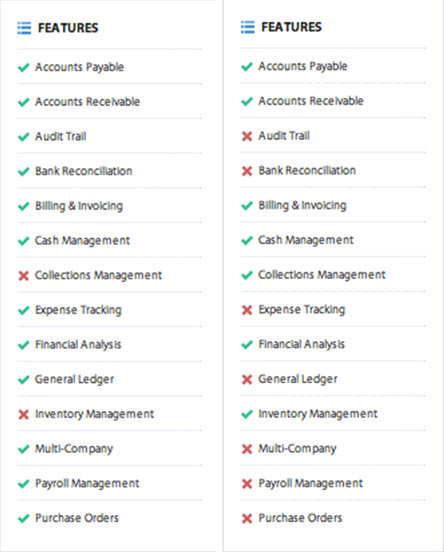 It may or may not surprise you that XERO has the features on the left while the list on the right belongs to Quickbooks:
It may or may not surprise you that XERO has the features on the left while the list on the right belongs to Quickbooks:
INVESTOR TAKEAWAY:
1) Keeping abreast of developments/trends in technology that hold the potential to be disruptive is essential – whether you are CEO of a firm or an investor.[32]
2) Drury’s decision to develop accounting software that is built from the beginning as SaaS (ie. “for the Cloud”) was either a stroke of genius or merely timely entry (or a mix of both). That single factor has given XRO a huge competitive advantage in the market.
3) The choice Drury made to build a program structure that (like Android) provides exceptional flexibility and easy (and free)[33] integration with apps and add-ons has been another huge plus for the XRO product.
4) Drury’s maturity and experience within the capital markets empowered him to raise more than enough capital to ensure growing the company into its “teen” years.
a. His “wisdom” was recognizing that he needed that capital to lead XRO with a plan that is long-term in focus!
5) The impact of Social Media (SM) within markets like business software is being shaped and discovered as we move ahead in time. It will be interesting if some analyst or scholar is able to put metrics to how much of an impact those SM giants have had with regard to customer market preferences being impacted by posts within SM vehicles;
6) Those who live in the U.S. live a relatively “insulated” life vis-à-vis life as it is in the rest of the world. I think it is of great help to U.S. investors to stretch our consciousness regarding (at least a bit) of the challenges that confront a company that is “born” in a country that does not have the infrastructure and resources that are commonplace within the U.S.!
7) Before you even imagine buying shares of XRO… I insist that you perform due diligence on its volatility, as well as decide if you can live with buying shares from the U.S. “Pink Sheets”, or through a broker than can purchase shares in Australia or New Zealand… or whether it will be preferable to wait until XRO lists its shares on a U.S. Exchange (exponentially more liquidity and smaller bid/ask spreads).
DISCLOSURE: the author has never purchased a stock on the Australian or New Zealand Exchanges. I am not inclined to buy stocks on the U.S. “pink sheets”. However, I do look forward to the day that XERO can be bought/sold on a U.S. Exchange! Nothing in this article is intended as a recommendation to buy or sell anything. Always consult with your financial advisor regarding changes in your portfolio – either subtractions or additions.
Submitted by Thomas Petty MBA CFP
[1] Software as a Service (SaaS)
[2] Thus far, XRO is exchange-listed only in New Zealand (2007) and Australia (2012).
[3] A class taught by Robert McCaw, the father of “Phil”, who was one of the first investors in Sam Morgan’s TradeMe Internet auction site when Sam started it in 1999! One could assume that McCaw’s passion for the potential of computers was infectious!
[4] There beats the heart of an entrepreneur!
[5] XRO is no “get rich quick” scheme. It has become a long-term passion for Drury!
[6] Trust me on this, folks – it simply sucked!
[7] Founded in 1999 in Arlington, VA.
[9] The movie made wonderful use of New Zealand’s natural wonder. There are organized tours of filming locations use in the movie.
[10] Just ask Intel (INTC) about that. Or consider the sharp upward trajectory of Qualcomm (QCOM) in the mobile age.
[11] In impassioned terms no less
[12] In fact, management might even decide that a simple strategy to reduce their strategic dilemma might be massive share buybacks – thereby helping boost per share financial metrics.
[13] A case in point was February’s purchase by Facebook (FB) of “WhatsApp” for 19 billion – a number greater than the annual GDP of San Marino, Cape Verde, Liberia, or Belize
[14] Just remember that anyone who uses XERO is (by definition) a “Cloud user”. That demographic embraces change!
[15] The market share char comes from: http://www.engadget.com/2014/01/29/strategy-analytics-2013-smartphone-share/
[16] Disclosure: I am not a software analyst. That is far above my pay grade. What I offer is based on my “best efforts” research.
[17] Michael’s business is based in Florida. For many years, he was an active member of Quickbooks’ Advisory Board and brought countless users to the INTU platform. As you will see later, Mr. Block has become a convert to XERO.
[18] I keep waiting for my buddy, Elon, to send me a complimentary Model S!
[19] These lists were created and published by CANTERRA, referenced earlier!
[20] Not positively!
[21] A reminder that we have already identified Quickbooks as the hands down winner in the “size of customer base” category!
[22]Note that (as suggested earlier) Mr. Block does have “an ax to grind.” He was a power user of Quickbooks for years. However, in recent years he has become disenchanted because of lack of responsiveness by INTU management, as well as by the “you don’t need an accountant” ad campaign. Once he became introduced to the power and flexibility of the XRO product, he became not only a XERO “user”, but a zealot!!
[23] http://exactcpa.blogspot.com/2013/10/xero-intuit-war-exploding.html
[24] It is well worth noting that YFS Magazine appears to have fully plunged into the Global Internet Publishing Age! The name and subtext of the publication (“Young, Fabulous, and Self-Employed”) got my full attention. I became very curious as to the “locale” of the editorial office. Despite my best efforts, all I could find were email and electronic “contacts”. Absolutely no “physical address” was disclosed!!
[25] For newer readers, my regard for hype is quite low.
[26] http://www.smh.com.au/business/sharemarket-darling-xero-dubbed-apple-of-accounting-20131106-2x0m7.html#ixzz2udfeyVAv
[27] In addition, SEEK is widely considered one of the “best of the best” in terms of technology companies that emerged from Australia.
[28] Some New Zealand fund managers have requested that XRO be removed from the nation’s key stock indices. They assert that XRO’s volatility distorts those indices too much!
[29] Organization for Economic Co-Operation and Development
[30] One report asserts that its stake is 50%
[31] Hawaiki Cable is led by former Alcatel-Lucent executive, Remi Galasso, (He obviously recognizes the high value of a global vision!)
[32] Both Microsoft (MSFT) and Intel (INTU) have either “missed the boat” on some key trends, or have engaged in/with that disruptive technology later than competitors and are trying to catch up.
[33] Through XERO’s API.
Related Posts
Also on Market Tamer…
Follow Us on Facebook


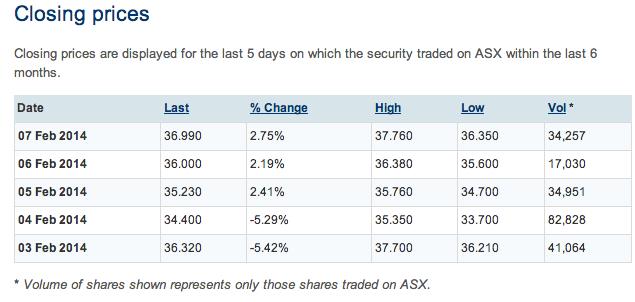
 This 1 New Cryptocurrency Category Could Send Solana to $300 or More
This 1 New Cryptocurrency Category Could Send Solana to $300 or More
